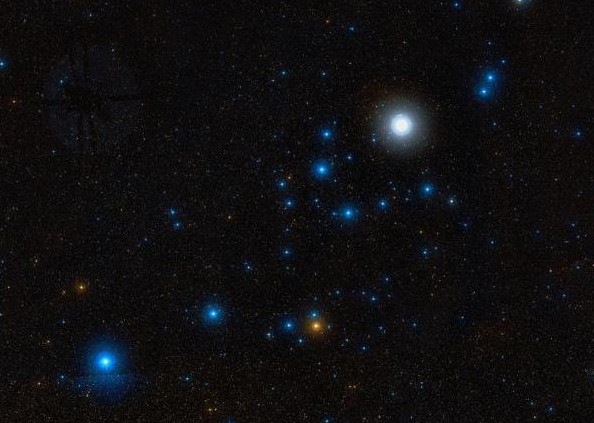The Alpha Persei Cluster, also known as Melotte 20 or Collinder 39, is an open star cluster located in the constellation Perseus, situated in the northern celestial hemisphere. This cluster lies approximately 590 light-years away from Earth and is notable for its rich stellar population.
Melotte 20 has been recognized since ancient times, with various cultures observing its stars throughout history. It was catalogued by the British astronomer Philibert Jacques Melotte in the early 20th century, who confirmed its classification as an open star cluster. His observations contributed to a better understanding of its structure and significance within our galaxy.
Physical Characteristics
The Alpha Persei Cluster is considered relatively young, containing several dozen to a few hundred stars packed within a region approximately 3 to 4 light-years in diameter. The majority of its stars are young, blue-white types, although the cluster also features some cooler, red stars, adding to its diversity.
The estimated age of the stars within the Alpha Persei Cluster is around a few million years, making it an excellent target for studying stellar evolution and the dynamics of young star clusters. Its proximity to Earth allows astronomers to conduct detailed observations, gaining insights into the processes that govern star formation and the lifecycle of stars.
Apparent Magnitude and Size
With an apparent magnitude of around 1.8, Melotte 20 is bright enough to be visible to the naked eye under dark skies. To the unaided observer, it appears as a faint, hazy patch of light. However, using binoculars or a small telescope reveals the cluster as a dense grouping of stars, with its structure becoming clearer and more defined across a few arcminutes in diameter.
Observation
Melotte 20 is best observed from northern latitudes during the winter months, particularly from December to February, when the constellation Perseus is high in the night sky. It is easily visible from dark-sky locations, but the use of binoculars or a small telescope enhances the viewing experience, allowing observers to appreciate the cluster’s true nature and rich star density.
Overall, the Alpha Persei Cluster offers a fascinating glimpse into the processes of star formation and evolution, making it an intriguing target for both amateur and professional astronomers alike. Its vibrant stars and relatively close proximity to Earth underscore its importance in the study of open star clusters within our galaxy.




